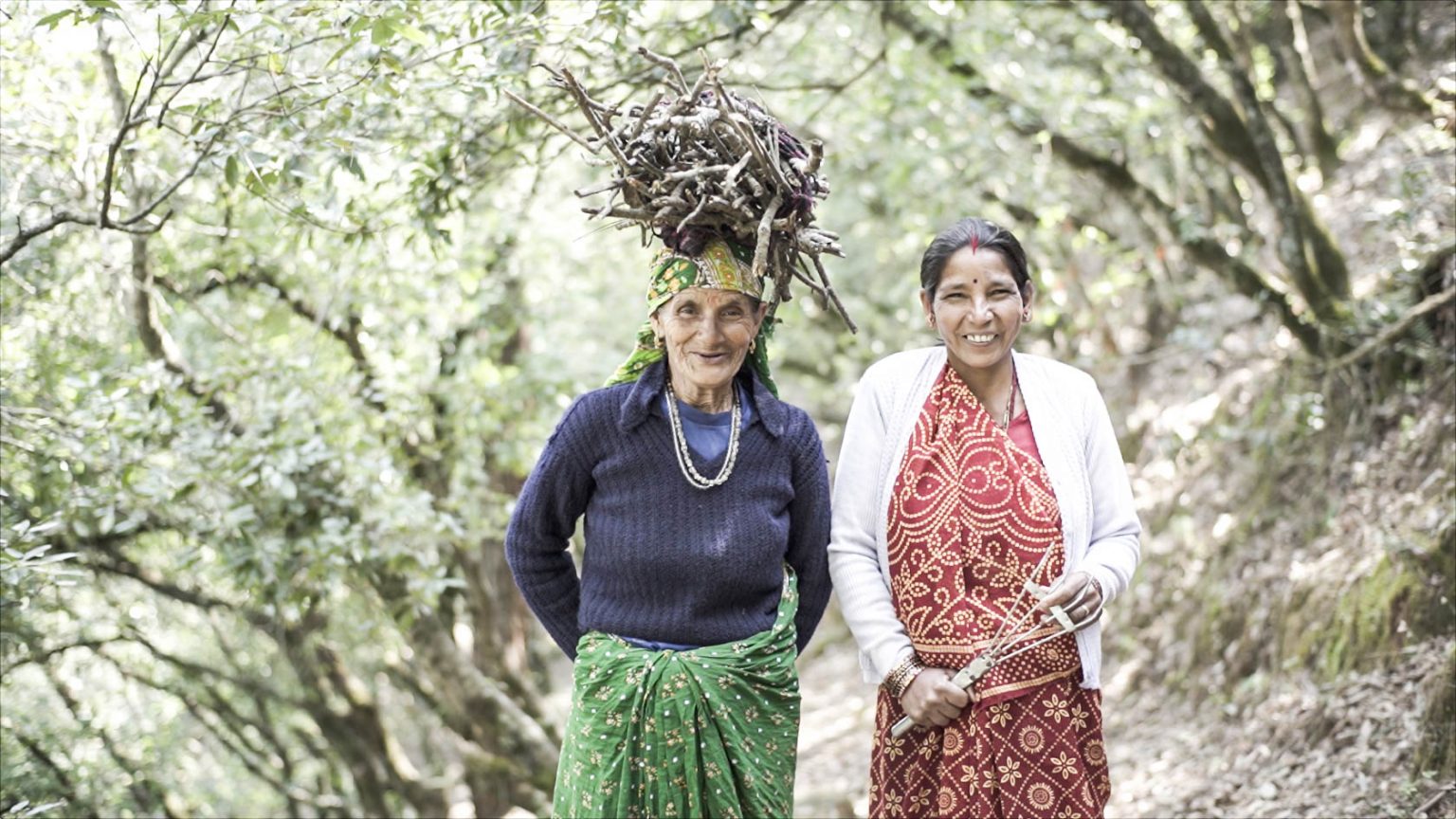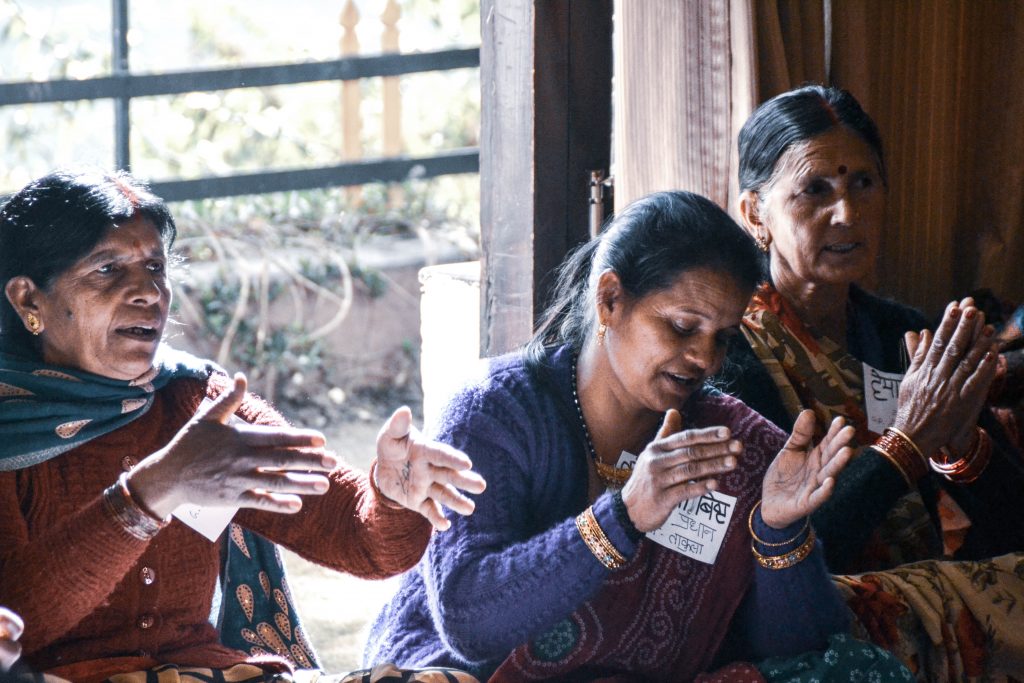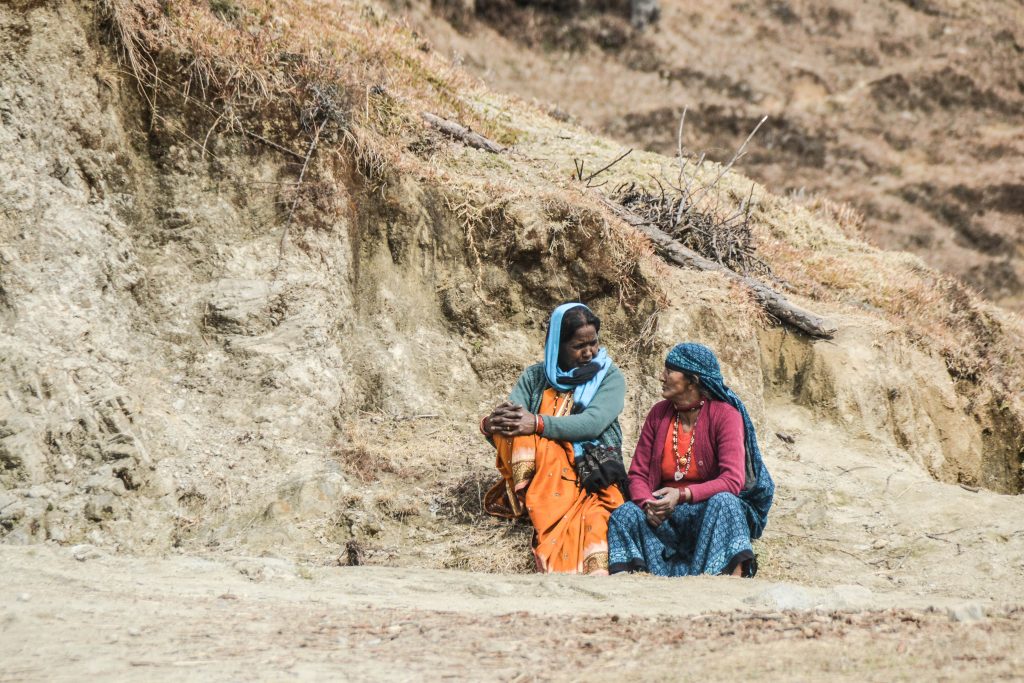Women Leaders Breathing Life Into Van Panchayats in Uttarakhand

Uttarakhand is home to the fierce ‘Chipko Movement.’ Led by the bold and spirited women in the 1960s, the movement was one of the many significant attempts to bring to light the relationship between women’s rights and environmental justice in its fight against large scale deforestation.
In recent times, we see inspired and motivated elected women representatives in Gram Panchayats ( India’s elected village councils) carrying forward the legacy of the Chipko movement as they rally around to strengthen the unique Uttarakhandi institution of Van Panchayats (forest councils).
In early 2017, during the course of several meetings organized by The Hunger Project, the issue of reconstituting Van Panchayats emerged. The elected women strongly asserted that the dynamic councils are critical to the implementation of forest conservation.
The call to refocus attention on forest councils also comes from the fact that no one is as connected with the forests as the women here are. There is an intricate socio-cultural linkage between the two. A point repeatedly evoked by the elected women representatives as they speak about access to forest resources, equity, and justice.
Forest-Women Connections
Traditionally, it is the women from the villages who have accessed the forest lands, governed, protected and utilized the resources that these lands generate.
The vast range of voices documented here elucidates the nature of environmental challenges faced by women and elected women representatives in the State. These voices are further articulated in an array of collective struggles and solutions offered under the aegis of Van Panchayat.

Despite threats and harassment, they are committed to preserving the forest councils and what they stand for in their fight against the burgeoning tourism mafia, the incessant violations, to defend indigenous communities’ right to justice/ Surbhi Mahajan
‘Women have been entrusted with the responsibility of fetching firewood, collecting leaves, branches and fruits and other forest produce for sale… fodder for cattle also comes from these forests; it is an important source for our livelihood, for our children.’ Women’s intense engagement with the forest makes it inevitable for them to feel more responsible to protect what they consider as ‘living, breathing creatures.’
—Basanti
“We are protectors of our forests, we are against the felling of ‘good’ trees by both the villagers and outsiders. Men particularly don’t care and hence they are easily bribed by those trying to encroach… they work to support private vested interests of a small population. They have a myopic view of needs immediate to them. We, on the other hand, work for public good, for community welfare and benefit.’
—-Hansa
Hansa shared that this was one of the reasons why men don’t want to see women in public spaces and raising their voices about important issues or else the status quo will be challenged.
“Van Panchayats are important simply because as a platform it informs and educates people about forest preservation. For instance, planting more tress protects the forests at higher altitudes, our source of water improves, the air we breathe is cleaner; or the planting of more pine trees and selling its extract ‘leesa’ (resin) would enhance the indigenous economy. For the ‘leesa’ we sell to the government, we receive a royalty (INR 700,000 (USD 11000)). Half of this amount goes back into planting more trees and forest management; part is used for repairing or maintaining physical infrastructure in the village. We only want to discourage over-exploitation of our forests. And we have seen when people understand and work together we all are benefited.’
—–Shobha Devi
Elected Women Leverage Public Office

The passion invested in reviving these forest councils is self-evident in the manner in which elected women leaders have vocalised the issues and brought them into public domain.
In the span of 3 years, 50 forest councils have been re-constituted as a direct result of the efforts of elected women representatives. They have ensured timely elections are held. More than 50,000 saplings have been planted under their careful supervision. All of this has only been possible after continually engaging with district administrations and advocating for upholding these relatively democratic and self-governing forest management institutions.
Durga Devi has reason to be proud when she says under her leadership the previously defunct institution was revived. She pointed out that the system had been rendered weak over the years due to irregularities in elections. The damage that ensued forced the elected women representatives to come together and push for fresh elections. The Veerangana federation was used as a platform to mobilize people. A young and determined woman was elected as the new Sarpanch. The earnest beginning saw fresh plantation drives, boundary wall construction to protect forest cover, details of income and expenditure, and other common works related to the general development of the village.

Another exemplary story comes in the form of their encounter with the river sand mining lobby.
‘We also put a stop to illegal mining. ‘We called a meeting between the government officials and the Van Panchayat members, informed him about the degradation of rivers, water depletion, serious ramifications for agricultural cultivation as a result of excessive mining. At the end of the meeting, the concerned official passed an order right there and then. This is a great victor for us as for the past year, there has been no such illegal activities.’
—–Durga Devi
Dhanuli Goswami reminisces about the emphatic spirit of the steady and collective efforts of Van Panchayat and federation women against setting up of a cement factory in the area.
‘The factory owners tried to enter the village several times. They even succeeded in bribing the men and luring them with potential employment opportunities if the factory was set up. The initial work saw disproportionate felling of trees and infringement on approximately 6 village lands. We rejected this new onslaught as we realised the damage it would cause, especially pollution and its effect on our health. Close to 200 women got together to fight it out and we forced the factory owners to put it in writing that they would not come back again.’
— Dhanuli Goswami
Participatory Environmental Governance and Women Leaders

In Uttarakhand, the mammoth task assumed by elected women representatives to leverage support and action around the issue of forest preservation is remarkable. They are empowering communities and ensuring livelihood opportunities for people, while aiming to protect the ecosystem.
They are fighting for the common lands and resources, which are rapidly collapsing due to increased bureaucratised control and the large-scale commercial development in the form of sand mining, the burgeoning tourism mafia, timber contractors, rapid urbanisation, dam construction, etc.
In the wake of worsening climate crisis, government apathy towards environmental issues and the recent indiscriminate attacks on forest rights, the significance of sustaining constitutionally-mandated bodies such as Van Panchayats cannot be stressed enough.
There is ample evidence confirming the fact that women are one of the worst victims of climate emergency. But they are also one of the biggest agents of change while adapting to environmental challenges. Elected women’s role in preserving Van Panchayats is of critical importance.
This exercise in participatory environmental governance, now vigorously supported by elected women representatives, is also symbolic of the leadership positions embraced by women in pushing for real conservation. More self-reliant the women leaders are, better the participation and chance of sustainable change. Both their stubborn courage and steadfastness stir up a sense of faith and firm promise of what collective action can achieve.
#Women Leaders, #Forest Rights, #Elected Leaders , #Local Governance, #Gram Panchayats
We believe everyone deserves equal access to accurate news. Support from our readers enables us to keep our journalism open and free for everyone, all over the world.

